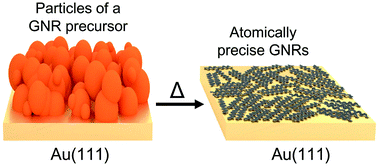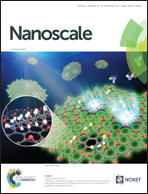Dense monolayer films of atomically precise graphene nanoribbons on metallic substrates enabled by direct contact transfer of molecular precursors†
Abstract
Atomically precise graphene nanoribbons (GNRs) of two types, chevron GNRs and N = 7 straight armchair GNRs (7-AGNRs), have been synthesized through a direct contact transfer (DCT) of molecular precursors on Au(111) and gradual annealing. This method provides an alternative to the conventional approach for the deposition of molecules on surfaces by sublimation and simplifies preparation of dense monolayer films of GNRs. The DCT method allows deposition of molecules on a surface in their original state and then studying their gradual transformation to polymers to GNRs by scanning tunneling microscopy (STM) upon annealing. We performed STM characterization of the precursors of chevron GNRs and 7-AGNRs, and demonstrate that the assemblies of the intermediates of the GNR synthesis are stabilized by π–π interactions. This conclusion was supported by the density functional theory calculations. The resulting monolayer films of GNRs have sufficient coverage and density of nanoribbons for ex situ characterization by spectroscopic methods, such as Raman spectroscopy, and may prove useful for the future GNR device studies.



 Please wait while we load your content...
Please wait while we load your content...